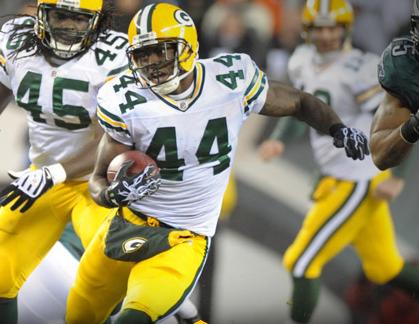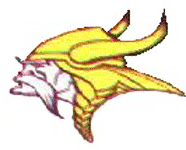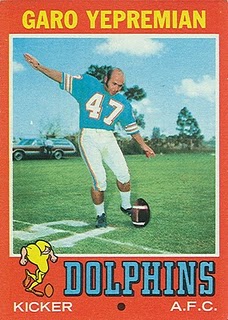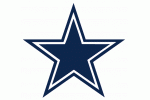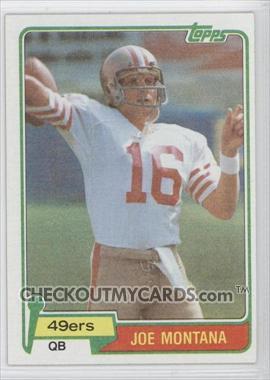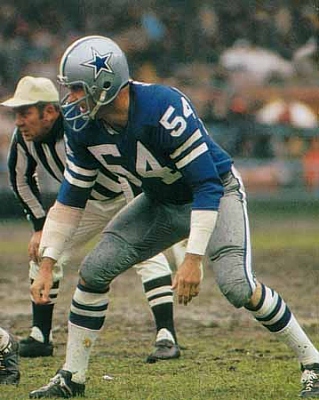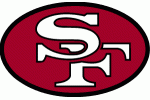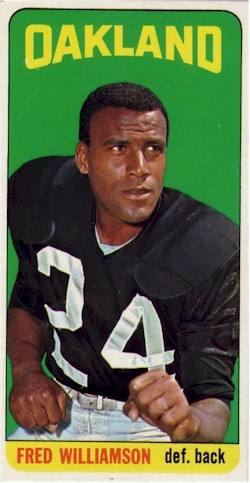Archive for February, 2011
NFL – Super Bowl Prediction
Green Bay rookie RB James Starks
Super Bowl XLV should be a classic game, being played between two of the National Football League’s premier franchises – the Pittsburgh Steelers and Green Bay Packers. To top it off, the teams will square off in Dallas owner Jerry Jones’ new billion dollar palace in front of over 100,000 fans and millions of television viewers. It will most likely set a new record for most fans attending the game, and with such a classic matchup may break TV ratings records also. The Pittsburgh Steelers have to be considered the favorite to win, regardless of what the oddsmakers say. They are the model NFL franchise. The consistency in how the team is operated is amazing. They have been owned by the Rooney family since the beginning. They were a losing franchise throughout the 1960s, but since 1970 have shown the rest of the NFL how it’s done. They’ve had only 3 head coaches in the 41 years since Chuck Noll turned the franchise around – Noll, Bill Cowher and the current coach, Mike Tomlin – and all 3 have won Super Bowls. When it comes to hiring minority head coaches, the Steelers are head and shoulders above the rest of the league. The rule directing teams to at least interview a minority candidate is called the Rooney Rule, since it was proposed by Steeler president Dan Rooney. While all the other teams give token interviews to minority candidates, then go ahead and recycle the same old coaches, when it came time to replace the retiring Cowher, the Steelers took the process seriously, and wound up hiring Tomlin, possibly the best young coach in the NFL who is on the verge of winning his second NFL title. It’s a little known fact that in 1957, the Steelers also hired the first African American assistant coach in history when they named Lowell Perry their receivers coach after his playing career was cut short by a serious injury. Of course, none of this has anything to do with how they’ll play on Sunday, but the fact is they are the most professionally-run franchise in the NFL and they haven’t won six Super Bowl titles, more than any other franchise, by accident. They know how to get it done. Then there are the Packers, another storied NFL franchise. They have had success under Curley Lambeau, Vince Lombardi and Mike Holmgren. Overall, they have won twice as many titles as the Steelers, 6 under Lambeau, 5 under Lombardi and one more for Holmgren for a total of 12. Their success spans nine decades, with a lot of mediocre football played in between the championship eras. They are clearly a team with a winning tradition, and current coach Mike McCarthy has done a great job of guiding them back to the top. The Packers are unique in that they are a small market team that is community-owned. Their general manager, Ted Thompson, deserves a lot of credit for the team reaching the Super Bowl also. He took the heat for dumping Brett Favre a few years ago and making the decision to go ahead and turn the team over to Aaron Rodgers. That decision looks pretty good at this point.
As for this Sunday’s game, I believe, even though the Steelers have much more championship experience on their roster, that the Packers will win. Green Bay, in my estimation, has the perfect offense to attack the vaunted Steeler defense. The Packers don’t run the ball that often, which isn’t a problem in this game since it’s almost impossible to run on the Steeler defense anyway. Green Bay will spread the defense out by using a lot of 4 and 5 receiver sets, with Rodgers beating the blitz with quick passes. Pittsburgh is vulnerable in the secondary if Green Bay’s line can pick up the Steeler blitzers and give Rodgers the extra seconds he’ll need to find open receivers. Rookie running back James Starks, the Niagara Falls and University of Buffalo product, will be a key player in the game. If he accomplishes what he has so far in the playoffs – picking up valuable yards on the ground when the Pack DOES run the ball to keep the defense honest – then Green Bay will win. Starks will also have the tough job of blitz pickup in the backfield – trying to sort out who is coming from where and getting over quickly enough to pick up the blitzers. Green Bay’s defense is good enough to handle Pittsburgh’s offense also. The Steelers run the ball with Rashard Mendenhall very effectively, and the Packers can be vulnerable to a power running game. Green Bay could be in trouble if the Steelers play a ball control game designed to control the clock and keep Rodgers off the field. The Packers’ defensive coaches have got to figure out ways to take advantage of Pittsburgh’s patchwork offensive line, that has lost starters all year long and will likely be missing their best player – rookie center Maurkice Pouncey – on Sunday. The player protecting Ben Roethlisberger’s blind side on Sunday, at left tackle, will be Jonathon Scott, who was one of many players shuffled in and out of the lineup on Buffalo’s oft-injured line in 2009. There have to be strategic ways to match Scott up with Pro Bowl linebacker Clay Matthews and cause Big Ben problems.
I feel the Packers will maintain drives and not allow Pittsburgh to play keepaway with a power ground game, and will win the game by more than a field goal. Green Bay 27, Pittsburgh 17.
Classic Team Logo of The Day
The logo of a football team that entered the NFL in 1961, the Minnesota Vikings. The Vikings, along with the Buffalo Bills, have the distinction of having lost 4 Super Bowl games, and never having won a single title. They were upset in Super Bowl IV by the Chiefs, when CFL veteran Joe Kapp was their quarterback, then lost 3 more times in the 1970s with Fran Tarkenton at the helm. Bud Grant was the coach for all 4 losses. Despite their Super Bowl failures, the Vikings were one of the strongest NFL teams throughout the late 1960s and into the ’70s. To add to their hard luck, in 1998, the Vikes won 15 of 16 regular season games and advanced to the NFC Championship game, where they were upset by Atlanta. Their kicker, Gary Anderson, who had been a perfect 35 for 35 on field goal attempts during the season, missed for the first time all year from 38 yards out with a chance to win the game, and they wound up losing in overtime.
Classic Sports Card of The Day
1971 Topps football card of former Miami Dolphins’ placekicker Garo Yepremian, who made one of the all-time “blooper” plays in Super Bowl history in Super Bowl VII. Yepremian, from Cyprus, somehow managed to get his hands on a bobbled snap on a Dolphin field goal attempt, then tried to apparently throw a pass. The ball just floated straight upward into the waiting arms of Redskins’ DB Mike Bass, who returned it for a touchdown and turned a 14-0 Miami lead into a close 14-7 game. The Dolphins wound up holding on to win to cap off an amazing undefeated 17-0 season with their first Super Bowl title. Yepremian lasted 16 seasons in the NFL, 14 with Miami, and was named the kicker on the NFL’s All Decade team for the 1970s. The picture used on this card was probably taken during an early training camp practice, since he wore jersey # 1 for his entire career with the Dolphins.
Classic Team Logo of The Day
This is the iconic logo of one of pro football’s winningest franchises, “America’s Team”, the Dallas Cowboys. The logo came into use starting in 1964, which is just about when the franchise began winning with regularity. The Cowboys have played in eight Super Bowls, and won 5 of them. The franchise had a record 20 consecutive winning seasons under coach Tom Landry, winning 2 titles during those years. When Jerry Jones bought the club in 1989 he unceremoniously dumped the legendary Landry, the only coach the franchise had known in its’ history, and replaced him with flamboyant college coach Jimmy Johnson. Jones took a lot of flak for the move, but it turned out to be the right one as the ‘Boys won 2 Super Bowls under Johnson, then another under Barry Switzer.
Classic Sports Card of The Day
From www.CheckOutMyCards.com , this is a 1981 Topps football card of the player many consider the greatest quarterback in NFL history, Joe Montana. He led the San Francisco 49ers to 4 Super Bowl titles, and is the only player in NFL history to be named Super Bowl MVP three times. “Joe Cool” earned so many accolades in his career that it’s hard to list them all, but here are a few: 8 time Pro Bowler, 2 time league MVP, named to both the All Decade team for the 1980s and the NFL’s 75th Anniversary All-Time team. Montana was above all a winner, and his jersey # 16 is retired by the 49ers. He was elected to the Pro Football Hall of Fame in 2000.
Classic Team Logo of The Day
Logo of the National Football League’s San Francisco 49ers, used from 1968 until 1995. The franchise has won 5 Super Bowl titles in its’ history, 3 under the late Bill Walsh and 2 more under George Siefert. The Niners were born as a franchise in the old All-America Conference in 1946, and entered the NFL in 1950. Their 5 Super Bowl titles rank them tied for second among NFL teams, but they have the distinction of being the only team with multiple Super Bowl wins that has never lost in the game.
Classic Sports Card of The Day
1965 Topps football card of former American Football League defensive back Fred “The Hammer” Williamson, who played 7 seasons for Oakland and Kansas City. Williamson was a notorious self-promoter, and as a Chief, prior to the inaugural Super Bowl, boasted that he would knock both Green Bay starting receivers out of the game with his famous “hammer”, a vicious “clothesline” forearm that he used regularly, that would get him fined, suspended and probably banned from today’s game. Ironically, “The Hammer” himself was knocked out of the game when he caught a knee to the head from Packer back Donny Anderson. After his playing days, Williamson had a successful acting career, specializing in what was called “Blaxploitation” films, and briefly served as an analyst on Monday Night Football.
